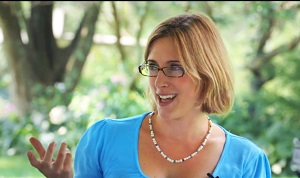The Adolescent Brain
 Sarah-Jayne Blakemore is a cognitive neuroscientist who studies the adolescent brain.
Sarah-Jayne Blakemore is a cognitive neuroscientist who studies the adolescent brain.
In a recent talk she gave at HeadCon 14 she said the following.
“If adolescence is a sensitive period for brain development, that is a double-sided coin because although it represents a period of opportunity in which the brain is particularly susceptible to acquiring new information in certain domains, it also might represent a period of vulnerability, in which the brain is particularly vulnerable to certain environmental inputs.”
There is not a great deal of research that has been done in the field of neuroscience on the adolescent brain, however that is changing. Like many areas of neuroscience, technology is allowing a greater opportunity to understand the way in which the human brain processes the input it receives. While it is, of course, different for every person, in some ways, we can understand a great deal from looking at what is similar. I am inspired by the work Professor Blakemore is doing. She is asking important questions about a critical time of life.
Today I am having some painting done in my condo. A young man who came to help his uncle paint saw a stack of my books and asked me if I was a writer. He said he would like to write someday about what he has gone through. We began to talk. He told me about growing up in Mexico and being part of a gang there. He was involved in crime, drugs and was in and out of jail. He has since turned his life around.
One of the things that struck me when we talked was when he said that he sees every group as a gang. He compared the painting group he works with to the gang he was part of. He said the people in the gang he was involved with in Mexico were like family. They cared about him and made him feel safe, even though what they were involved with was “wrong and dangerous”.
We talked more. As he reflected on it, he described himself as being unable to feel the pain of others while he was in the gang. He only cared about how powerful he felt when he was with the gang. It reminded me of a book I read by Frank Meeink called Autobiography of a Recovering Skinhead. It also reminded me of myself when I was with the cult I was part of. Frank, my young painter and myself were all at that vulnerable age Sarah-Jayne Blakemore talks about when we each joined the groups that became our life, and that we each regret being part of now.
The more I talked with my new friend, the more he defined for himself, and me, the differences between the group of painters he is part of now and the gang he was part of in his younger years. Yes, both are groups of people that share something, both make him feel loved and supported. Now, however, he says he feels the pain his Mother went through when she cried at night for him when he was with the gang. Now, he has more empathy. When he was with the gang he felt like it was the gang against everyone else in the world. I felt that way, during my years in the cult. This is a very important distinction. In violent extremist organizations, gangs and other dangerous groups there is a dehumanization that takes place with regard to anyone outside the group. The way the brain inputs information about the “other” changes. This makes it possible to do horrendous things and feel justified.
The work Professor Blakemore is doing describes the adolescent brain as being more sensitive to environmental inputs. It is complex, yet there is a very important aspect of the adolescent brain we need to work at understanding. The degree of vulnerability varies from person to person. However, what neuroscience can teach us about brain development is important to understand, especially when looking at preventing young people from joining gangs, cults, or getting into unhealthy or violent relationships. There are other factors that explain why the gentle young man painting my walls joined a gang, of course, but brain development cannot be ignored as we grapple to understand how to prevent young people from going down dangerous roads.



Leave a Reply
Want to join the discussion?Feel free to contribute!